
Turbofire

Years of Production:
1969 to 1970
Country of Origin:
US Only
Casting Variations:
None noted
Interior Colors:
Dark and light interiors
Clear Glass
Color Chart
| US COLORS: |
COMMENTS: |
| aqua |
common |
| blue | common |
| gold | common |
| green | common |
| lime | common |
| antifreeze | common |
| olive | common |
| dark blue |
common |
| orange |
common |
| red/white interior |
common |
| light blue |
uncommon |
| purple |
uncommon |
| rose |
uncommon |
| brown |
uncommon |
| emerald green |
uncommon |
| ice blue |
uncommon |
| chocolate brown |
uncommon |
| faded lime |
hard to find |
| hot pink |
hard to find |
| magenta |
hard to find |
| red/dark interior |
very hard to find |
| light ("apple") green |
rare |
Discussion:
The Turbofire is one of the four fully Mattel designed concept cars released in the 1969 product line. All previous concept cars had been based on existing full sized
custom show cars. The other three, also designed by Ira Gilford, are the Twinmill, Splittin' Image and the Torero. Although first issued in 1969, the Turbofire was
produced for several years and as such is one of the most common redines.
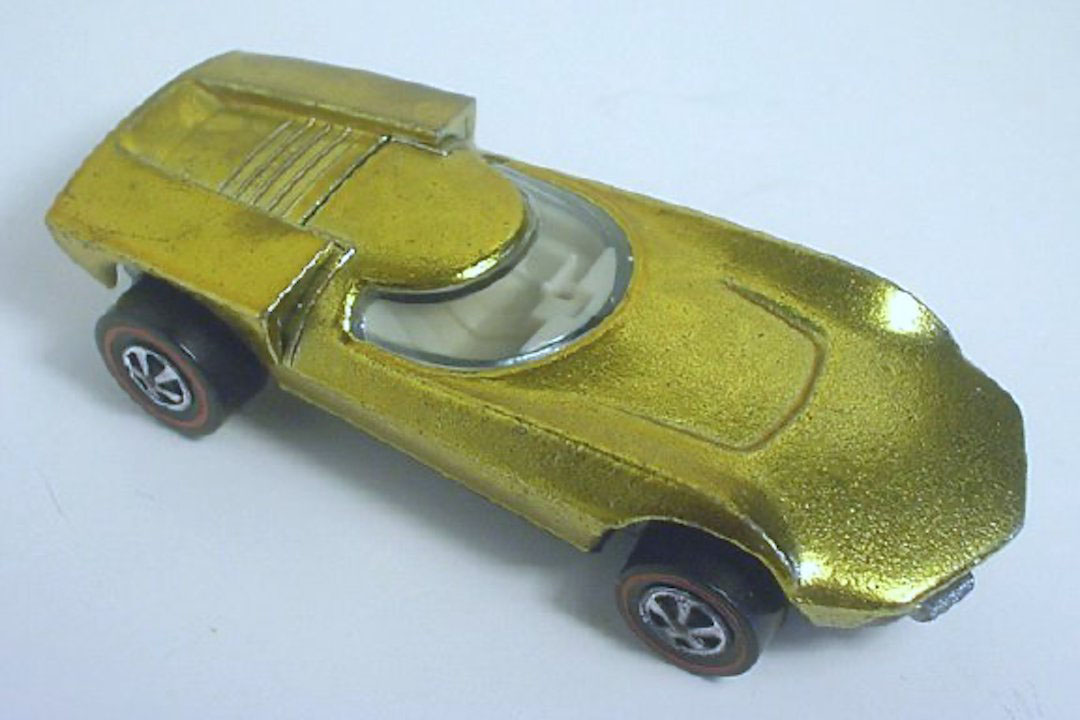
The only detail on the Turbofire is the painted tailight.
One Turbofire has been found with painted vents on the hood, however, its origin in unknown.
There are no known casting variations among production Turbofires.

The rear hood on the Turbofire opens, exposing a turbine engine.

The large single tail light is usually painted with international orange trim, however many if not all red and orange cars have no trim paint.
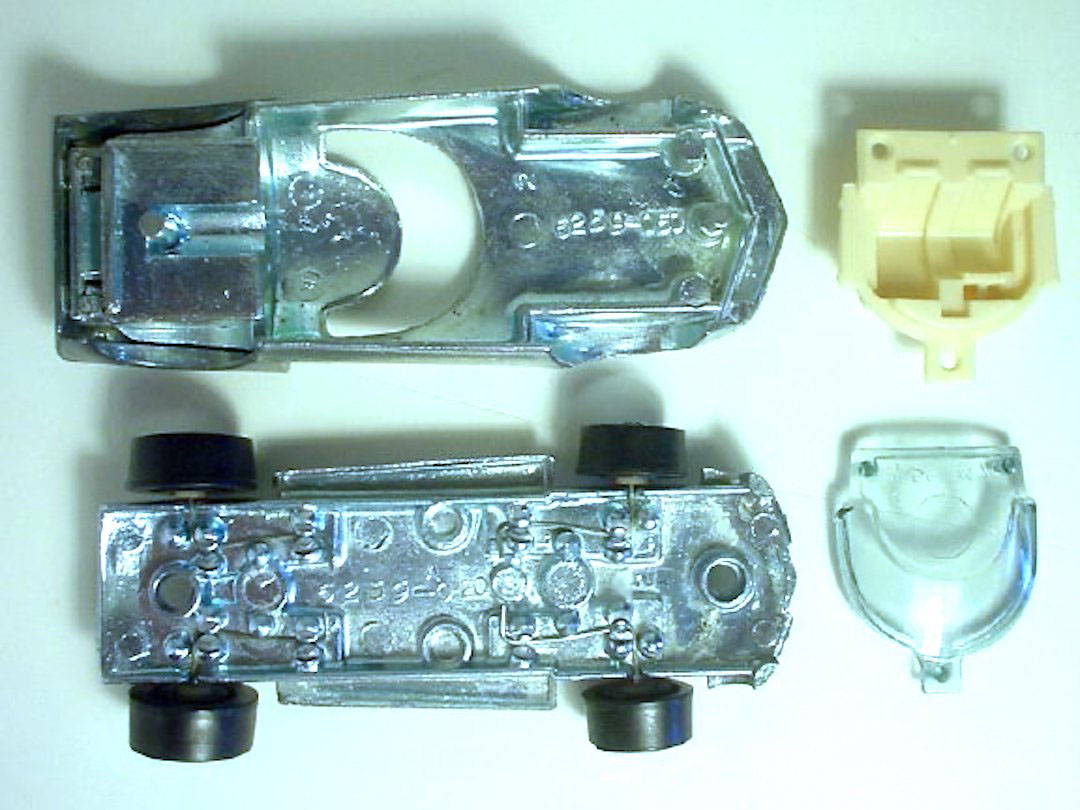
An unspun Turbofire disassembled to show the parts.

There are minor trademark and copyright text size differences on some bases. All Turbofires were made in the USA.
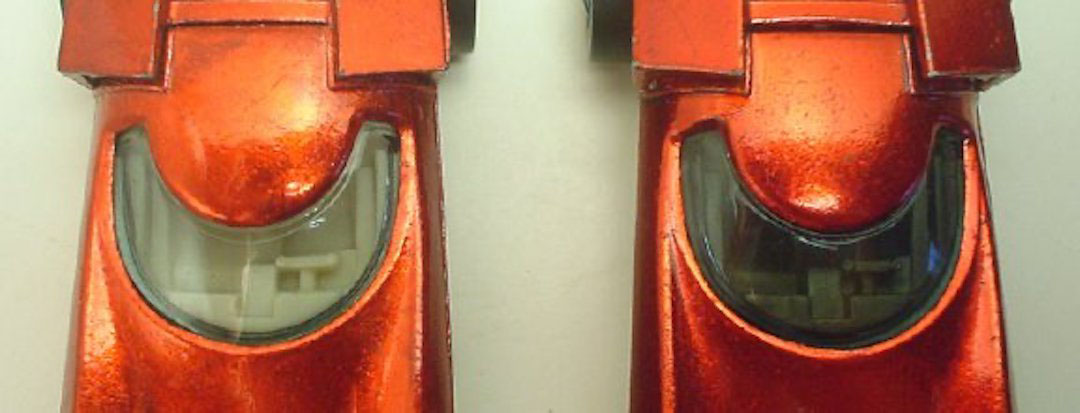
Nearly all Turbofires have white interiors. Among production Turbofires, the dark interior has only been found in red and aqua colored cars. About 1% of
red Turbofires have the dark interior. Only three examples of aqua dark interior are known. All production Turbofires have clear glass.
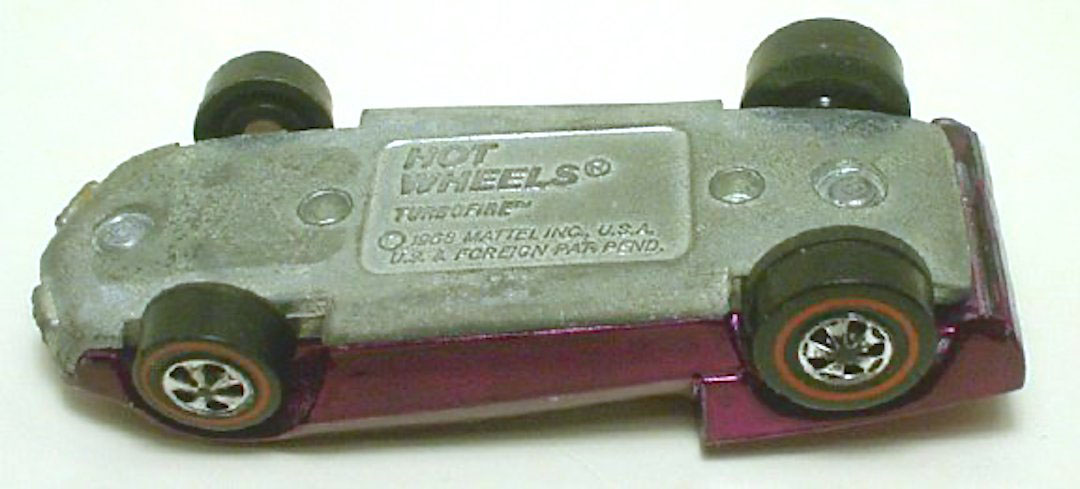
Turbofire with bearing wheels on the front axle and cap wheels in the rear
Over 95% of all Turbofires were assembled with bearing type wheels. Capped wheels can be found but they are not common. Some Turbofires have a mixture of
bearing wheels and capped wheels. Although the wheel type presents opportunities for unusual variations, it has no particular influence on the value of a Turbofire.
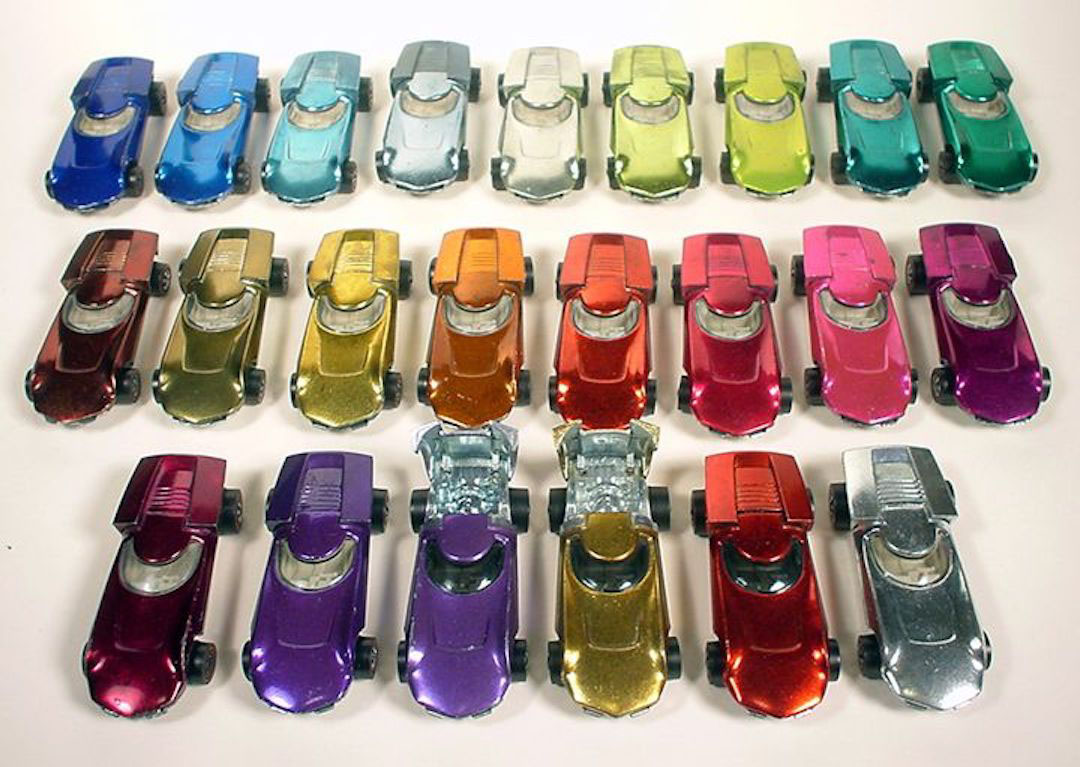
The Turbofire came in all of the spectraflame colors and a multitude of shades. The tail light is usually painted in an opaque international orange color,
however certain colors have no tail light paint at all. See the chart above for color rarities.
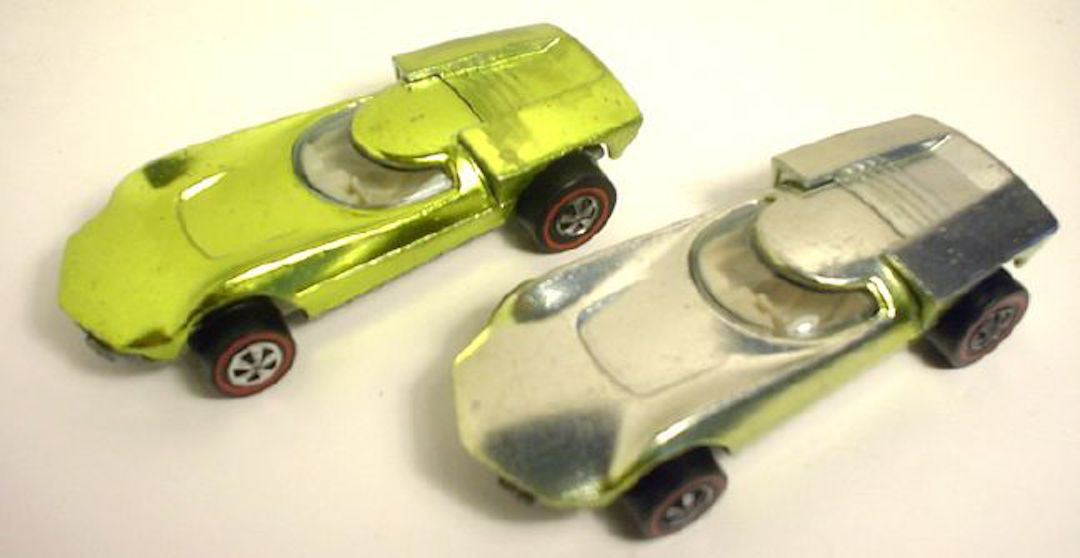
One interesting peculiarity is that some lime green Turbofires have faded to the point where they appear to be unpainted. However, a close inspection of the
inside of the fender wells will usually reveal some tell tale remnants of the lime green paint.
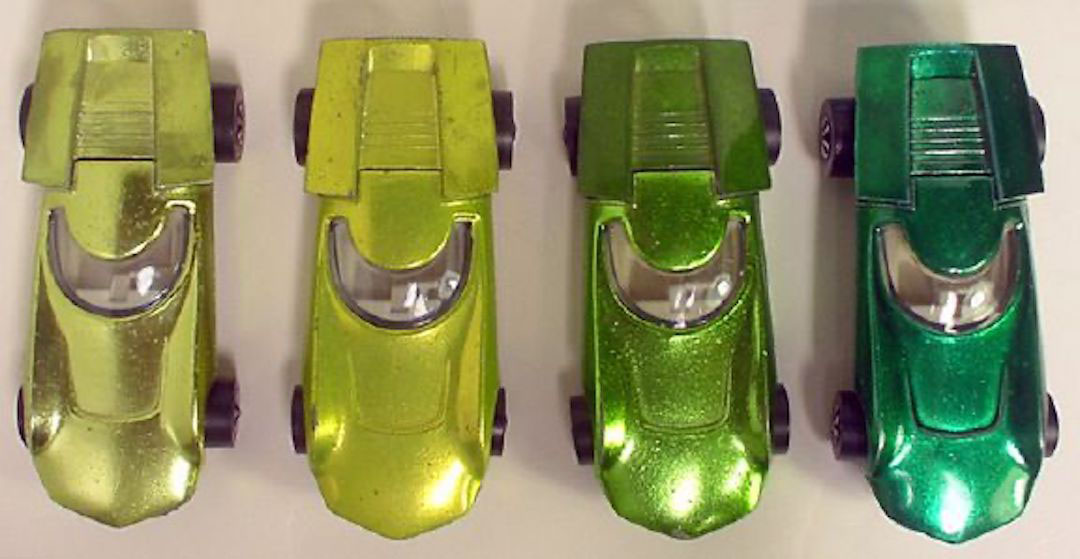
Turbofires, from left: lime, antifreeze, light green and green.
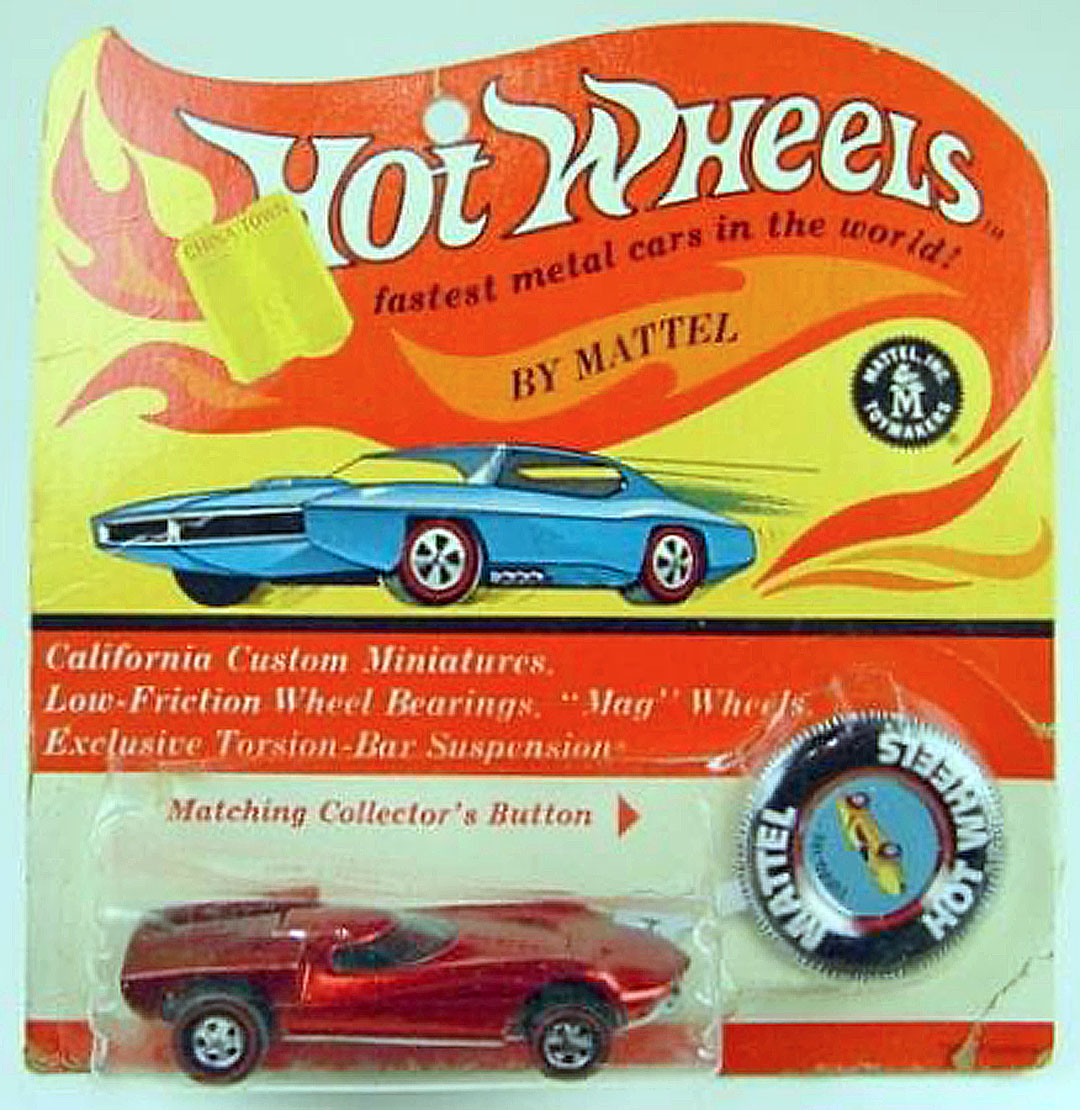
A Rare Dark Interior in a Cheetah Card (early production)
Prototypes
In January of 1968, when Ira Gilford designed the car, he dubbed it the "Dream Car". The original sketch and the approval sample have survived to this day.
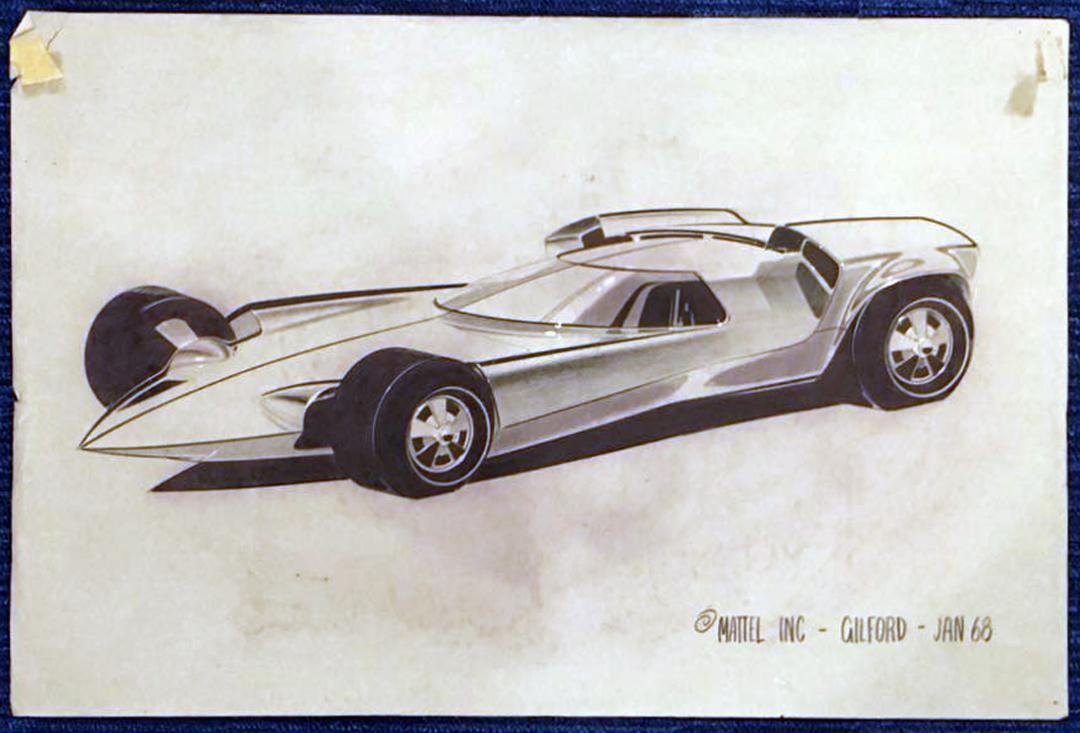
Original "Dream Car" Sketch (courtesy of Bruce Pascal)
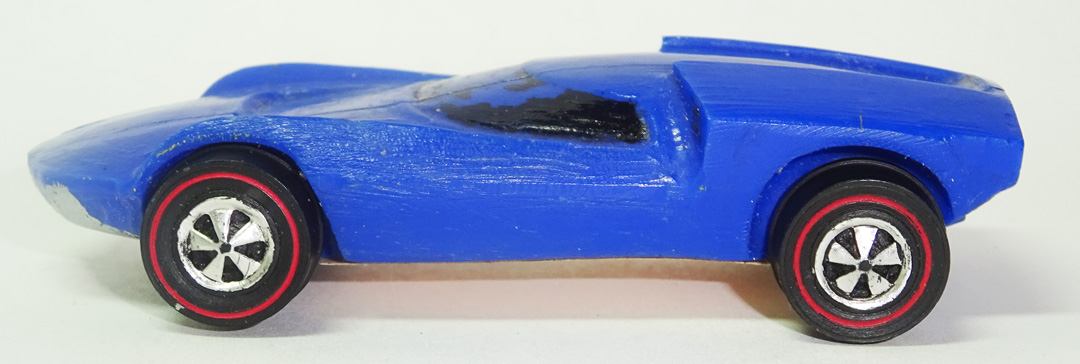
Original Hand Made "Dream Car" Approval Sample

Views of the Dream Car Approval Sample
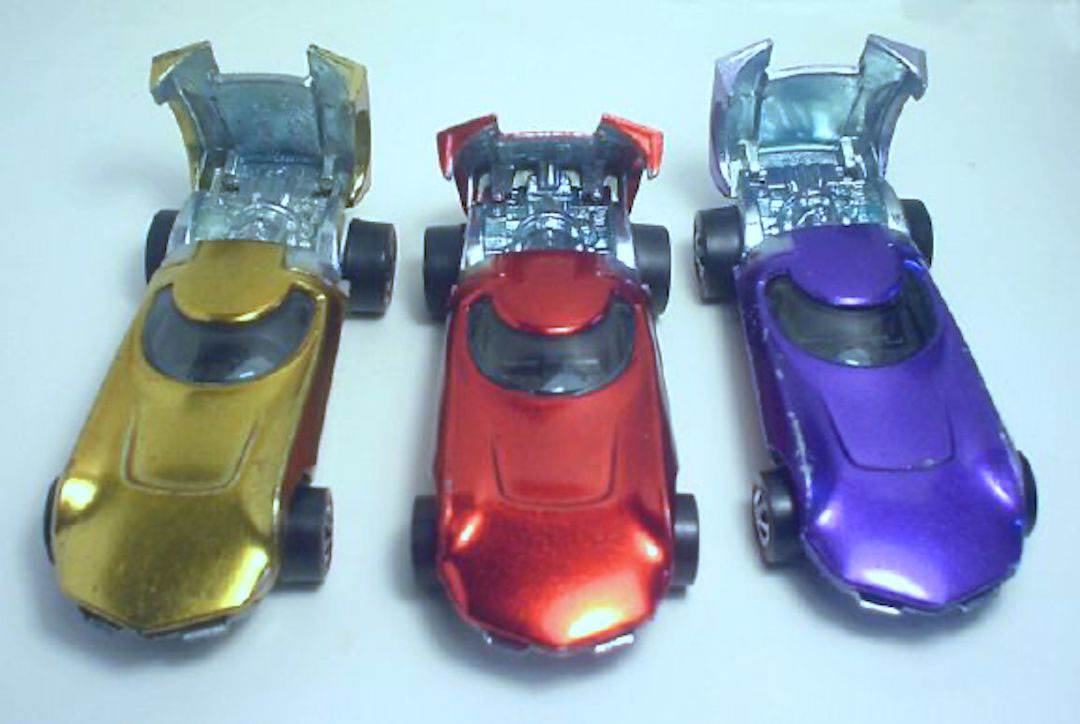
Two prototype Turbofires flank a red production piece
A number of complete preproduction Turbofires are known. The purple is hand painted, coming from the famous Room 1111 at Irvine. The gold one turned up on
eBay in 2003. The preproduction cars have a casting variation which clearly distinguishes them from the production casting.
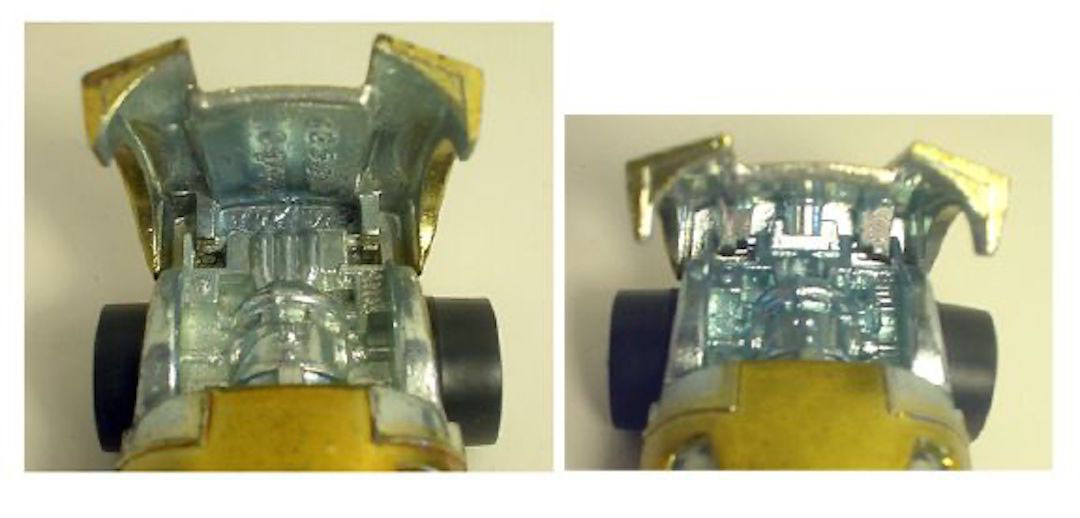
On the preproduction piece, the rear lid opens wide and the engine exhaust pipes extend to the rear of the base. Similar to early Ford J cars, there is no
travel stop, so the hood could be extended backwards too far and could easily be broken off. On the production piece, the travel stop was added to the base,
on top of the tail pipes. The peg on the hood was added and and the hinge was redesigned, adding metal to strengthen it.

Another feature of the preproduction pieces is the presence of a vertical line of metal in the front fender well, known as the "shock absorber".
This feature is not found in the production versions.

A number of preproduction Turbofires have been found with enamel paint. These were most likely paint samples for evaluation of the paint wear characteristics.
Knock Offs
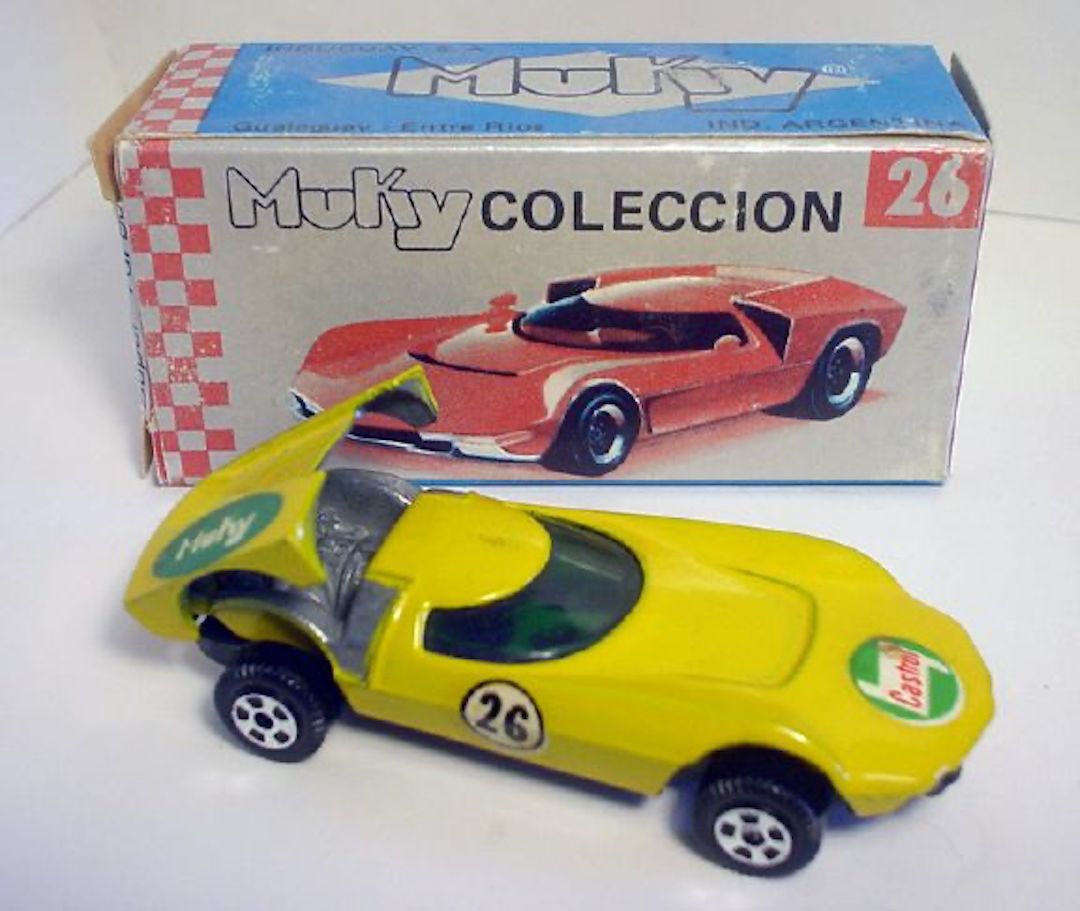
The Turbofire casting was reproduced by the Muky toy company in Argentina. They issued several variations of the Turbofire.
Photos and info credits: Ted Gray
| All |
1968 |
1969 |
1970 |
1971 |
1972 |
1973 |
1974 |
1975 |
1976 |
1977 |
| Customs | |
Gran Prix | |
Heavyweights | |
Spoilers | |
Super Chromes | |
Alternate Colors | |
CIPSA | |
Home |

* DISCLAIMER *
Private use of original images is allowed.
Non-profit, non-commercial publication of original images is allowed only with prior expressed written consent from Graymatters.
For other commercial, for-profit or redistribution needs, please contact the site owner. This site is not affiliated with Mattel, Inc.
Questions? ... Send me an e-mail: tngray@nautiloid.net
© 2023 by Graymatters. All Rights Reserved.